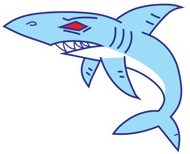https://www.lafishblog.com/best-tide-to-catch-speckled-trout/
Best Tide to Catch Speckled Trout Is Not What Most Fishermen Think
What’s the best tide to catch speckled trout? The beginning or end? Rising or falling? This blog post reveals the key knowledge most anglers are missing.
The Truth About Speckled Trout And Tides
If you spend a lot of time browsing fishing reports then surely you’ve seen this age old question:
What is the best tide to catch speckled trout?
And we often see this generic answer:
Just before and after tide change.
There’s always some “expert” wielding that typical (and not so well thought out) answer that is usually accompanied by a tide table with arrows pointing to the exact times you need to be casting a line, like this one:
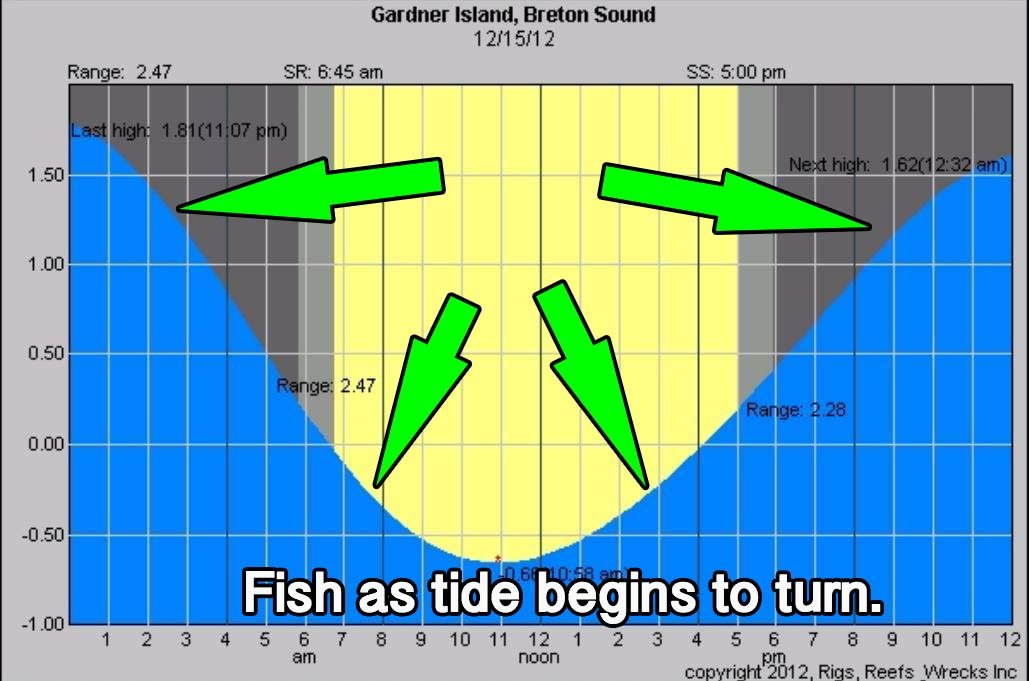
The above graphic isn’t totally right, nor is it totally wrong. It’s just not as right as it could be.
Let’s call this piece of advice the “recommended tide time” advice and –I’m going to be a straight shooter here– that specific piece of fishing advice could not be more wrong.
Yes, that seems harsh but, trust me, keep reading and you’ll understand where I’m coming from.
The problem with the above graphic is that the information it portrays is very one-dimensional: it only tells you what the tide is doing at one location with all things being equal.
But we’re not fishing at one location, and things are never equal in the diverse environment of inshore fishing.
If you look back at that graphic you’ll see the supposed (and not actual) “best tide to catch speckled trout” occurs at roughly 7:30am and again at 2:30pm (give or take).
Well, I promise you that fishing only at 7:30am or 2:30pm is a great way to make sure you don’t catch a limit of speckled trout.
The reality is that the best tide to catch speckled trout is not happening only during those times.
Whatever is practically moving all day long and – if you use what’s in the rest of this blog post – you will be able to consistently locate that moving water.
This is because water flows differently through each uniquely shaped body of water in the marsh.
I don’t want to get ahead of ourselves here, and think it’s best we take it from the top to ensure we’re both on the same sheet of music.
So, to fully understand the concepts I’ll explain in this blog post, lets look at:
Why do speckled trout love moving water?
Because it is easier for them to feed.
Generally speaking, rather than burn energy chasing bait, they let the tide bring the bait to them.
Knowing this, speckled trout can be found waiting in spots where bait is flowing, like shrimp during the fall migration.
In fact, it looks exactly like this:
Pretty cool video, right?
It’s easy to see this simple concept: if water is moving, trout are active and more likely to be feeding.
When the water is slack, they become inactive and hardly feed.
KNOWLEDGE BOMB
It’s worth noting that speckled trout do not always use the tide to feed like what you see, though they generally do.
During winter conditions they are found feeding on finfish not found in the current.
This blog post explains why in detail.
Okay, now we know how they feed, so what is the best tide to catch speckled trout?
The trout in the video do not know exact details like tidal range, when there will be low tide, high tide or the price of tea in China.
They’re just fish with tiny brains.
(sometimes outwitting humans with much larger brains)
All they know is that the water is moving and bait is coming to them, so they are ready and looking for food to eat.
Water movement is what matters.
NOT specific times on a tide table.
So, the question we should really be asking is:
What kind of water movement is best to catch speckled trout?
The answer is plain as day in that video.
You’ll see it is not too slow and not too fast (not that there is an exact current speed you can measure to discern if biting trout are present or not, we are just going with the working assumption that extremes aren’t ideal).
Now you should ask:
Q: Where can I find that kind of water movement like what I saw in the video?
A: You can find that kind of water movement at virtually any time, somewhere in the marsh.
This is because bodies of water are not shaped the same (as mentioned earlier) and – because they are not shaped the same – water will flow differently through them.
In order to shed some light on this concept I must teach you two things to answer this question (and show you where biting speckled trout can be found).
It’s Time To Learn Fluid Dynamics
Okay, I know I just whipped out some science on you, but don’t tuck tail and run just yet.
“Fluid dynamics” is nothing more than a fancy ten-dollar word that means “how water moves”.
I’m not referring to gravitational pull of the sun and moon, or water levels affected by wind.
I am referring to how water flows through a space or – in our case – a lagoon, bayou, trenasse, bay, etc.
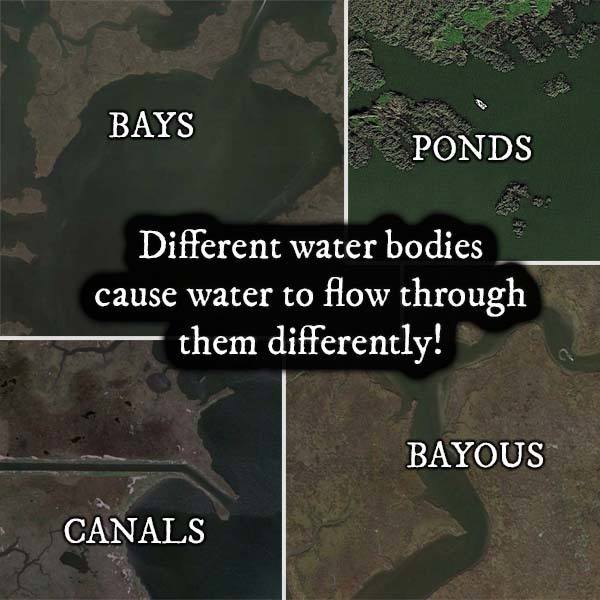
Flow Velocity
Flow velocity really means “current” or “water speed”.
Faster flow velocity = faster water current.
Water will flow faster through a smaller space, and will flow slower through a larger space.
Flow Capacity
Flow capacity refers to how much water is flowing.
The bathroom faucet does not have as much flow capacity as the Mississippi River.
Only a larger space can accommodate more flow capacity.
Confused? Try This:
Try this breathing exercise if you’re having a tough time understanding these concepts. Crumple up a small piece of paper and place it on a table in front of you.
Now, open your mouth as wide as you can and try blowing the paper off the table. It’s difficult isn’t it?
This time, close your mouth and pucker your lips to blow the paper off the table (like you normally would). It worked, didn’t it?
When your mouth was wide open you couldn’t get your breath to come out fast enough to blow the wad of paper away. It wasn’t going fast enough. Your breath didn’t have much flow velocity.
But, when you formed a small space to push your breath through, you were suddenly able to create enough flow velocity to achieve your goal.
This same principle applies in the marsh.
What do fluid dynamics have to do with the best tide to catch speckled trout?
Understanding these two concepts makes it easier to see that water movement will vary across nearby locations despite having the same amount of solar and lunar gravitational pull on them.
For example, water flows faster through Bayou Maringouin than it does across Bay Chicot.
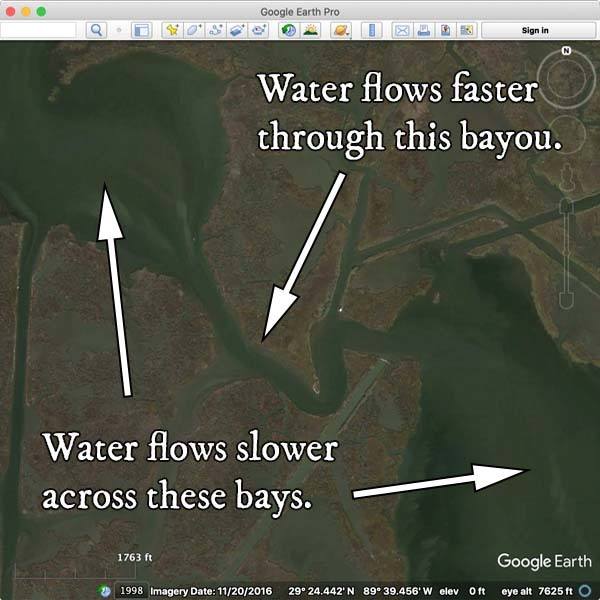
So, looking at the graphic below, if you observe slack water at Spot X in Bay Chicot, then a move to Spot Z in Bayou Maringouin may yield moving water and biting trout.
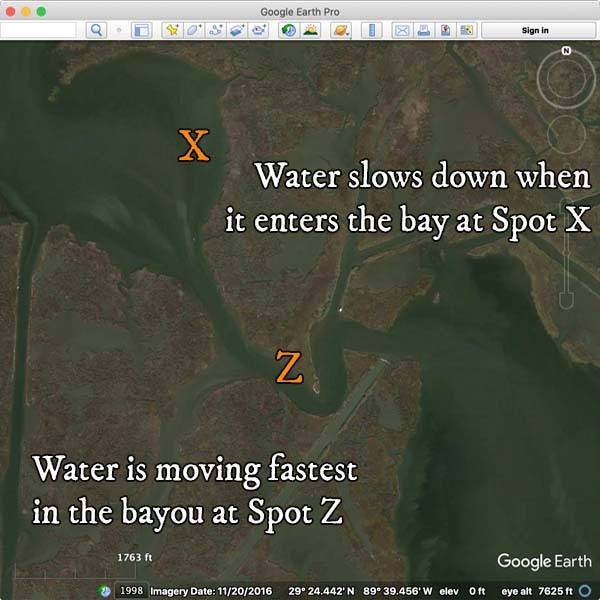
Or, if water is moving too fast at Spot Z, then a move to Spot X may be the right decision.
There’s something to this concept, because there’s a boat fishing the mouth of Bayou Maringouin!
This is crazy considering this spot was picked out purely for how it looked on Google Earth.
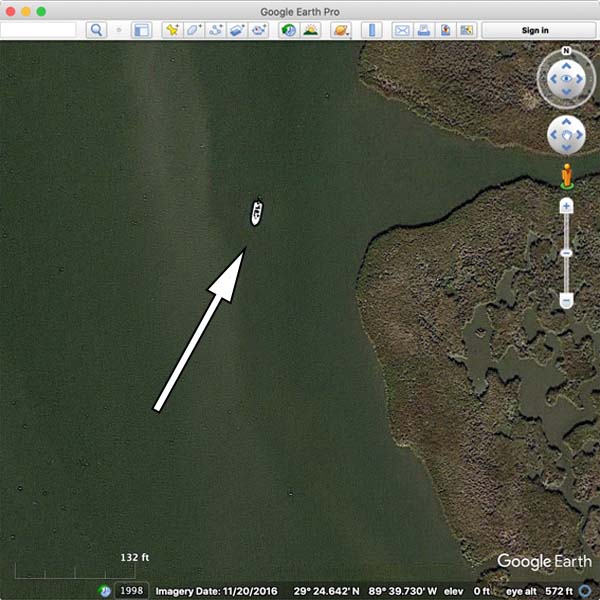
Putting It All Together To Understand Moving Water And Speckled Trout
Now do you see the genius in truly understanding the best tide for speckled trout?
It doesn’t matter if you are not at Spot X during the so-called “recommended” time.
You did not miss the trout bite simply because you can make a small move to find the right kind of moving water and get back on them.
On the flip side, you could arrive at Spot X for the “recommended” time of 7:30am just to discover that water isn’t moving as it should.
What are you going to do? Fish there anyway because that’s the “best time” to fish for speckled trout?
That’d be a very poor fishing decision and outright ignoring the conditions at hand.
These Fishing Locations Also Share This Characteristic
The example we just went through is a good one, but not the only one.
These are other fishing spots you should be looking at:
Now do you see that the “recommended tide time” advice is poor fishing advice?
That ding-a-ling tide table cannot possibly predict the kind of moving water speckled trout like to feed in.
Now, let’s cover one more important concept to better understand the best tide to catch speckled trout.
Use Multiple Tide Tables On Your Fishing Trip To Get The Most Moving Water Possible
Remember that at the beginning of this blog post I had mentioned that a tide table only gives you tidal information for a single fishing spot.
Well, good thing we fish in more than one fishing spot!
Fact of the matter is that tidal highs and lows are spread out across space and time, sometimes with a big difference between two areas that are relatively close to each other.
The best example of this tidal phenomenon would be the Biloxi Marsh (Biloxi State Wildlife Management Area on the map below) near Hopedale, Louisiana.
It’s wedged between two major tidal juggernauts, Lake Borgne and Breton Sound, and in the graphic below they are represented by the Shell Beach and Comfort Island tide tables, respectively.
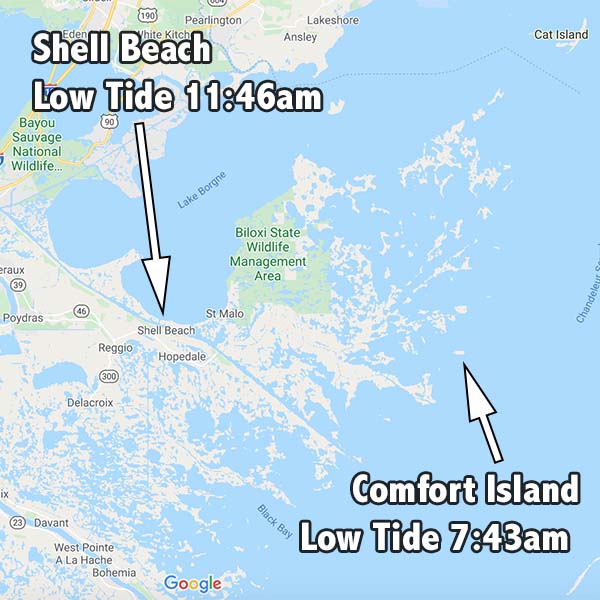
As you can see, these two tide tables (on this one specific day) are four hours apart.
This means that – when you run out of falling tide at Comfort Island – you can make a move to Shell Beach to begin fishing a falling tide once again.
No, it’s not time travel.
You’re just taking advantage of the fact that the distance between the two tide tables is (only) 25 miles and there’s four hours difference between them.
Don’t you think it’s possible to cross 25 miles in less than four hours?
Exactly.
Of course, you don’t have to go all the way to Shell Beach ( or vice versa, like I did in this fishing trip to that location)
In my experience, you just need to get closer and pay attention to indicators of moving water as you make your run.
The all-time favorite are crab traps!
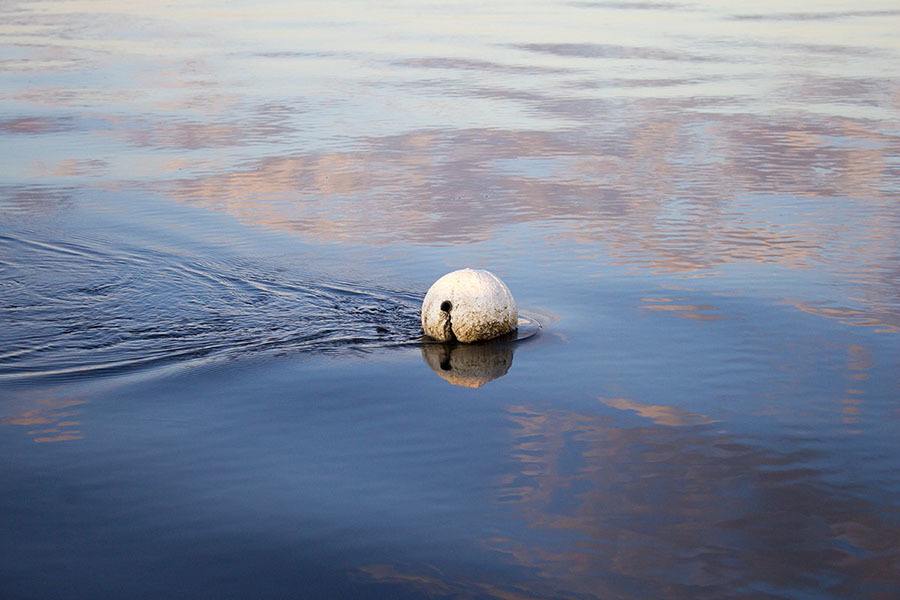
Crab traps are a great indicator of which way and how hard the water is flowing at a given spot.
Lake Borgne and Breton Sound aren’t the only example.
Manila Village and Pass Abel are on opposite sides of Barataria Bay and have a big difference between tidal lows and highs, as much as 7 hours!
See how understanding all this is a much better answer to the original question of “what is the best tide to catch speckled trout”?
What do we do when there’s a neap tide?
This is a good question, because speckled trout tend to feed less during a neap tide.
Up until this point we’ve been operating on the assumption that there is some kind of a tide range to work with.
But what if there’s little to no tide range at all?
You can still successfully apply the knowledge here to find where there will be at least some kind of moving water.
The types of fishing spots listed earlier in this article are good examples, especially big points in large bodies of water.
Good examples include the south end of the Trestles in Lake Pontchartrain and the end of the Long Rocks in Hopedale (though that’s a rock jetty, not a big point).
Conclusion About Speckled Trout And Tides
The “recommended tide time” answer is a poor one, and that’s because it doesn’t acknowledge how dynamic the marsh is.
So, in the future, when someone asks “What’s the best tide to catch speckled trout?” you will know that the only answer you can give must include these two facts:
- Current speed changes with the size of the water body.
- The tide does not move uniformly across the marsh.
When you understand those things, you are apt to make better decisions on the water that lead to catching more fish which ultimately ends up making great memories that last a lifetime.
Isn’t that what we are all after?
Moving Water Is Only One Piece Of The Puzzle
What we covered in this blog post is only one piece of inshore fishing knowledge that I use to consistently catch limits of speckled trout and redfish.
There are many other things I can share with you:
These are things I share in my weekly newsletter and, if you’d like to get them, all you have to do is sign up!
••••••Reads (283)
